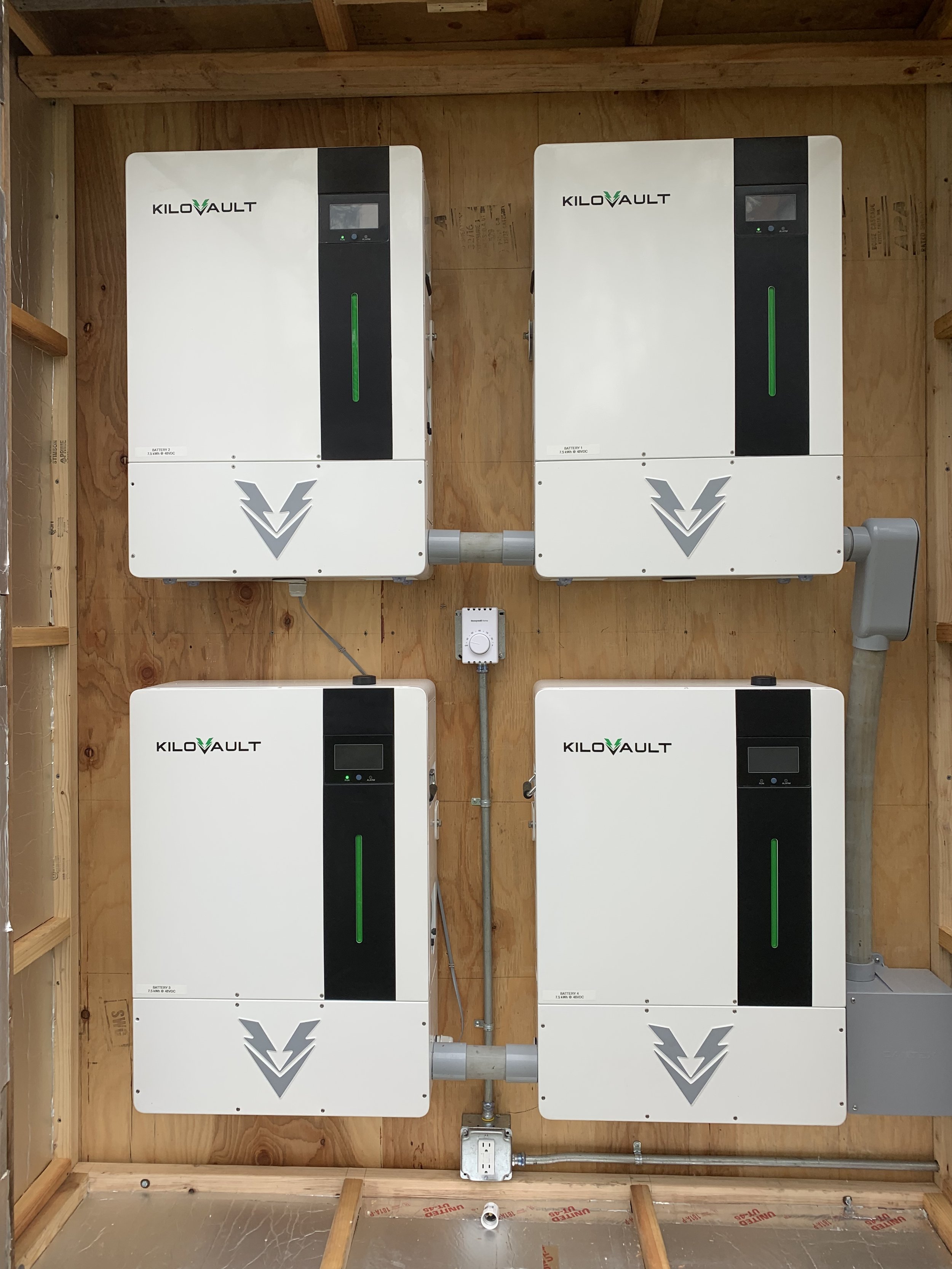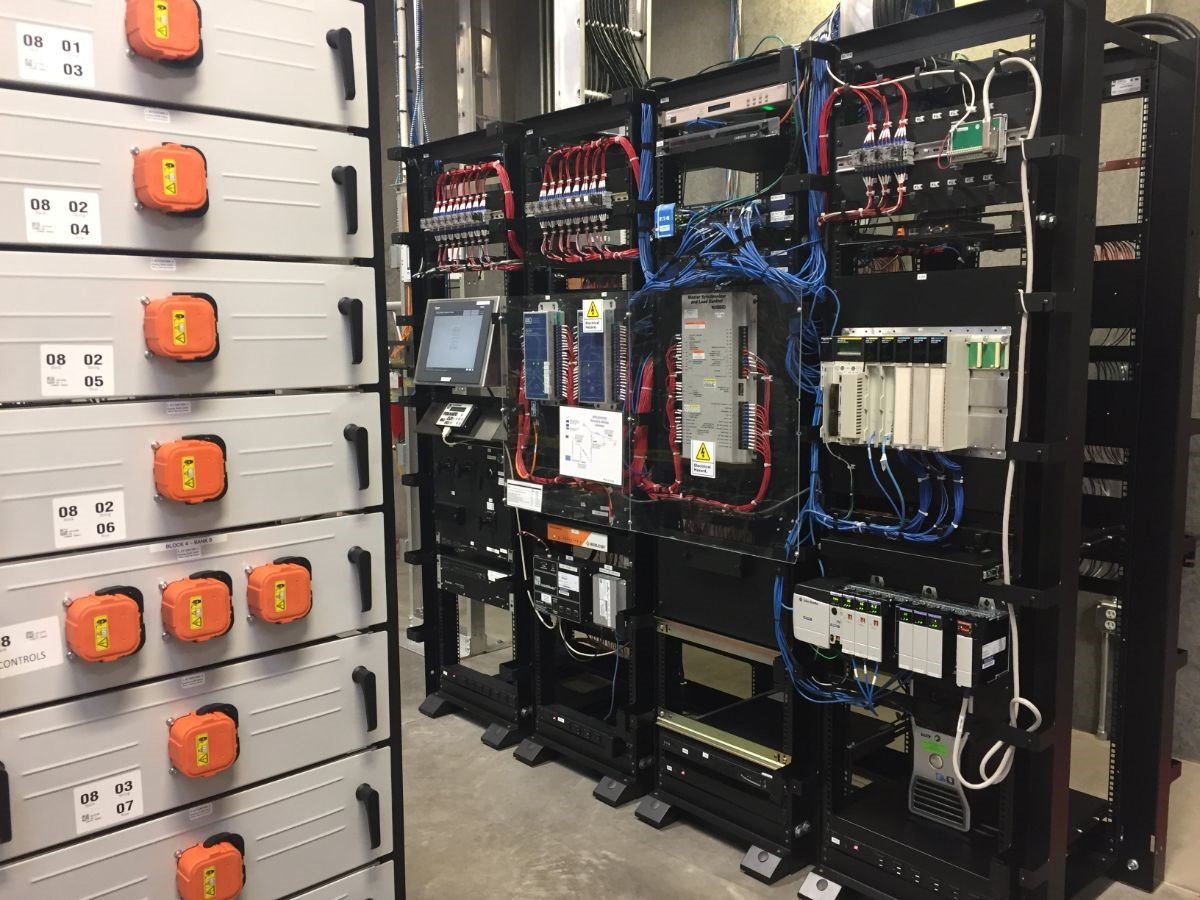*Batteries Are Included: the Rise of Energy Storage
Some energy resources, like petroleum fuels or natural gas, are easily stored in tanks and pipelines to be distributed when it’s needed. Electricity is another story – generating facilities like power plants, wind farms, and solar facilities produce power that’s sent to the grid and immediately used in homes and businesses. Typically, in the United States, we have about 25 days’ worth of gasoline stored and ready for daily consumption, and about 35 days of natural gas stored. For electricity, it’s less than a few hours’ worth.
While electricity can’t be stored in tanks and pipelines, it can be stored in batteries – ranging from the AAAs in your TV remote to a several-kilowatt battery for your home to 1 megawatt or greater for utility-scale storage.
In our 2020 Biennial Energy Report, we featured the basics, the trends, and opportunities for residential energy storage and utility-scale energy storage.
Residential Energy Storage
Home batteries may not look glamorous, but they can help keep your lights on in a power outage!
Residential battery storage systems are just what they sound like – large rechargeable batteries designed to store and deliver electricity to a home. They can be charged by the grid or with an onsite generator, like rooftop solar. The electricity stored in the batteries can provide power to the home during an outage or to supplement regular electricity use in the home. For example, a battery with a storage capacity of 12 kilowatt hours could support a load of 2 kilowatts for six hours, potentially keeping the lights on and the refrigerator cold during a power outage as long as the system is set up by your installer so it can be “islanded.” An islanded system’s equipment is installed so it can still operate independent of the grid if it goes down.
Residential batteries can also be configured to communicate with a utility, so the utility can operate the battery as a resource for its entire system – meeting peak loads or maintaining local grid stability. This can lead to competition for the power in the event of an outage, of course, if the utility needs the stored power for its grid but the customer also wants to use it as backup power. The utility and the customer will typically create an agreement to ensure there’s still capacity to provide backup power for the customer. Here in Oregon, Portland General Electric created a pilot program to test utility operation of residential energy storage systems as part of its Smart Grid Test Bed.
Interested in solar and storage at home? The Oregon Department of Energy is providing rebates for residential customers who install solar or solar and paired battery storage at home – up to $7,500 for paired solar and storage installed at the same time. Organizations that provide services to Oregonians with low incomes are also eligible for rebates – up to $45,000 for solar and paired battery storage. Learn more on our website.
Utility-Scale Storage
Batteries can also be sized up, 1 megawatt or greater, to provide additional capacity to the electric grid. Utility-scale storage allows more flexibility for electricity providers to manage generation, transmission, and distribution – particularly for storing renewable electricity. A utility-scale solar facility, for example, produces electricity when the sun shines – but if not all of the electricity is needed as it’s produced, it can become wasted energy. If that solar facility has storage onsite, it can store the extra solar-generated power to be used after the sun goes down.
PGE’s Salem Smart Power Center
Oregon currently has one utility-scale storage facility, Portland General Electric’s Salem Smart Power Center. It’s a standalone system with a 5-megawatt capacity. Numerous other projects, however, are in various stages of development. Currently, 10 projects under Energy Facility Siting Council jurisdiction have a proposed energy storage component.
Different technologies can store and discharge electricity, in addition to chemical storage like a battery. Thermal storage makes use of heating or cooling materials, while electro-magnetic storage makes use of electrical or magnetic fields. Mechanical storage makes use of gravity or kinetic force, such as pumped storage hydropower (learn more in one of our recent podcast episodes). Essentially, when electricity is needed, water from an upper reservoir is released into a lower reservoir through a turbine to produce energy. Later, when electricity use and costs are low, the water is pumped back up to the upper reservoir to be stored and used again. Two Oregon pumped storage projects are under review by the Federal Energy Regulatory Commission – the Swan Lake Pumped Hydro facility and the Owyhee Pumped Hydro facility.
Overall, as costs continue to drop and technology improves, we expect to see more energy storage systems coming online in Oregon – from residential and commercial installations to utility-scale storage.



